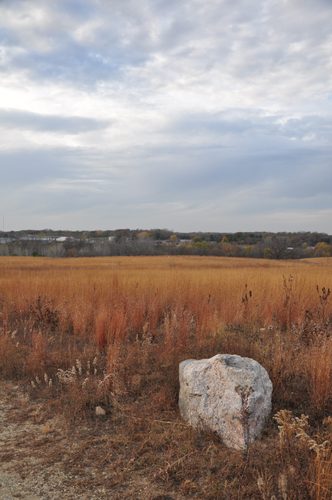
Prairies are unique, grass-dominated habitats characterized by the absence of trees and other woody vegetation. In addition to an abundance of grasses, tallgrass prairies, such as those found in Minnesota, support a diverse assemblage of wildflowers that are well adapted for life in the prairie. Native prairie plant species typically have deep root systems making them both drought- and fire-tolerant. In fact, periodic fires help maintain prairie habitat by preventing the encroachment of trees that would outcompete grassland species, returning nutrients into the soil that stimulate plant growth, and increasing the rate of seed germination. The extensive root systems of prairie plants also contribute to the formation of a thick layer of soil that is rich in nutrients and organic matter.
Minnesota was once covered by approximately 18 million acres of tallgrass prairie, roughly one-third of the state’s total area. Today, less than 2 percent of that original prairie remains.
In an effort to restore this lost prairie habitat, Carleton students and staff began planting prairie species on Hillside Prairie in the Lower Arboretum in 1978, with larger scale restorations beginning in 1995 when professional staff was hired. In the Upper Arb, prairie restoration to date has been focused around Postage Stamp Prairie, a tiny fragment of the original Minnesota prairie. Nearby restored prairies will buffer this valuable remnant and provide habitat for essential pollinators and other prairie animals.
New areas of prairie now are being planted each year with approximately 200 acres planted to date. The development of the prairie community in the restorations is the subject of ongoing research by Carleton faculty and students.The Arb’s restored prairies support approximately 80 different native prairie plant species. The link below leads to a gallery featuring 18 of the most common prairie plants found in the Arb.